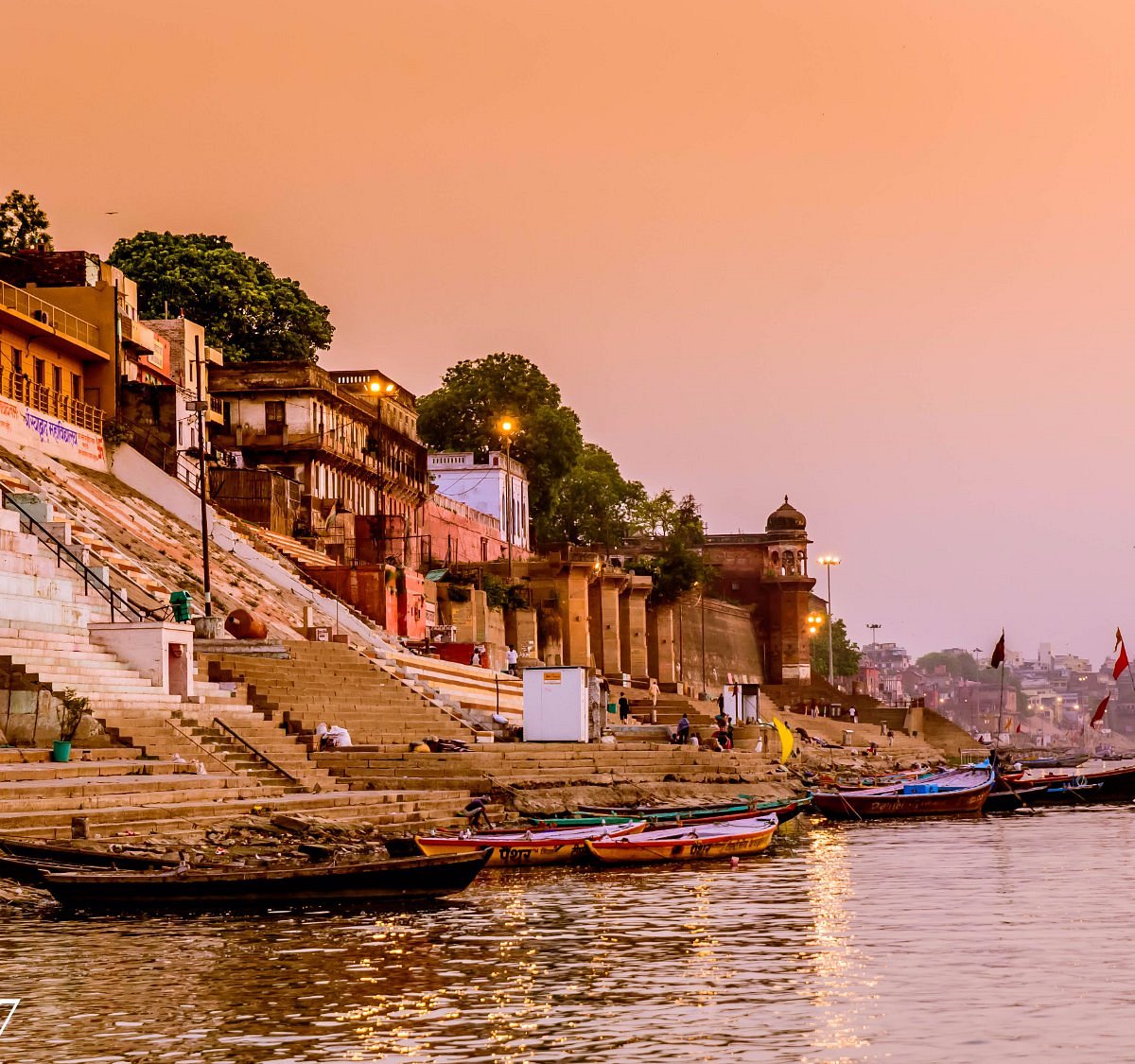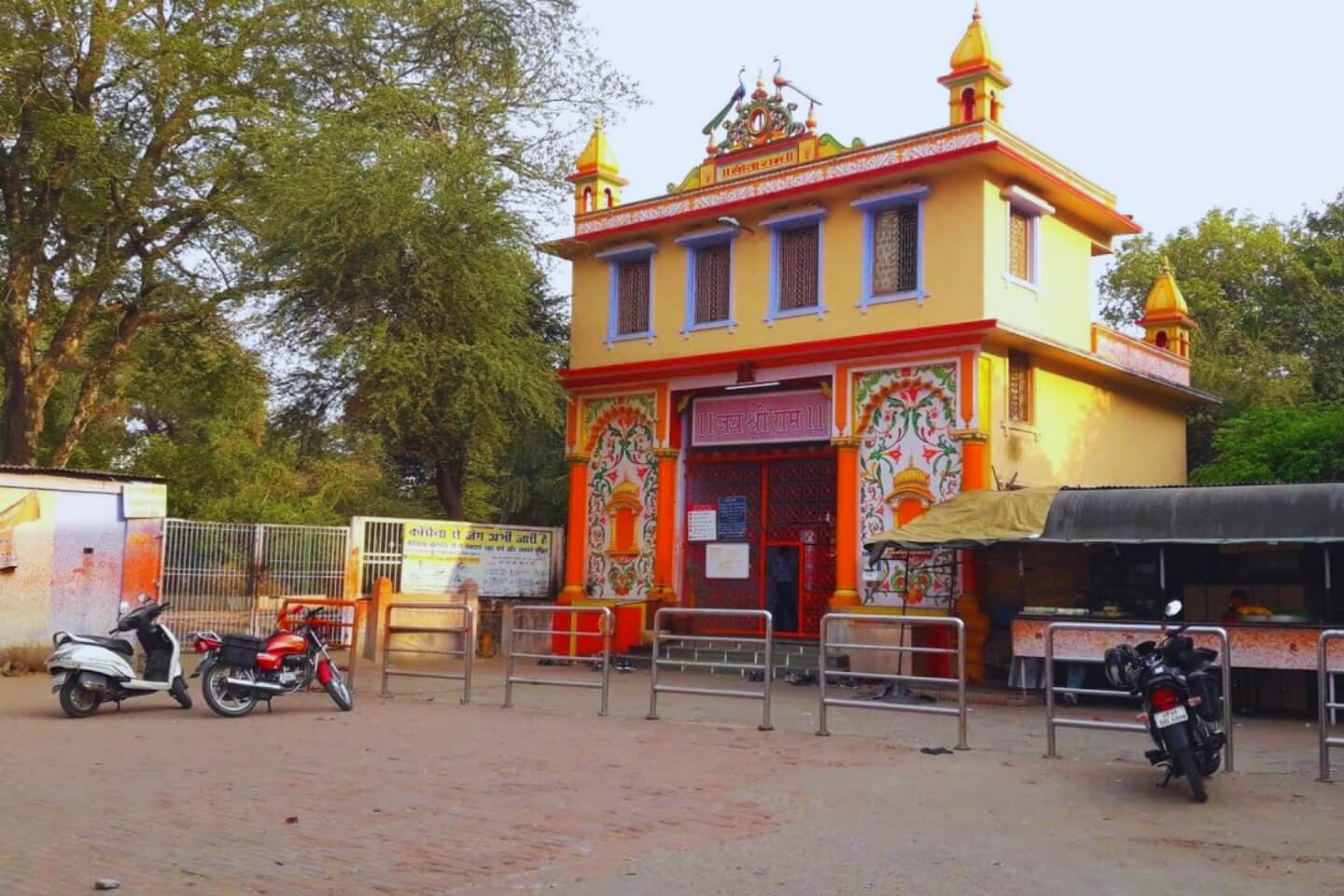Sacred Attractions
Explore the spiritual heart of Varanasi
Sacred Ghats

Dashashwamedh Ghat
Dashashwamedh Ghat is one of Varanasi's most famous and vibrant ghats, renowned for its nightly Ganga Aarti ceremony. Legend says it was created by Brahma, who performed ten Ashwamedha Yagyas (horse sacrifices) there. The ghat is a major spiritual center, attracting both devotees and tourists who come to witness the spectacular aarti, a ritualistic worship of the river Ganga, with priests performing elaborate ceremonies using fire lamps, incense, and chanting. The ghat's lively atmosphere and its proximity to the Kashi Vishwanath Temple make it a must-visit destination in Varanasi.

Assi Ghat
Assi Ghat, located at the southern end of Varanasi where the Assi River meets the Ganges, is a significant and vibrant ghat known for its spiritual and cultural importance. It's a place where daily rituals, including the captivating Ganga Aarti, take place, attracting both pilgrims and tourists. The ghat is also a hub for various activities like yoga , meditation, and cultural performances, offering a glimpse into Varanasi's rich heritage. This serene ghat is believed to have been blessed by Lord Shiva and Goddess Parvati themselves

Manikarnika Ghat
Manikarnika Ghat in Varanasi is one of the oldest and holiest cremation grounds in India, situated on the banks of the Ganges River. It is a place where the cycle of life and death is constantly on display, with bodies being brought for cremation throughout the day and night. Legend says that Lord Shiva and Parvati bathed here, and her earring (Manikarnika) fell into the water, giving the ghat its name. The ghat is a powerful symbol of Hindu beliefs about mortality and liberation from the cycle of rebirth, attracting both pilgrims and those seeking to witness these ancient rituals.
Ancient Temples

Kashi Vishwanath Temple
The Kashi Vishwanath Temple, a revered Hindu shrine dedicated to Lord Shiva, is situated in Varanasi, Uttar Pradesh, India. It's one of the twelve Jyotirlingas, considered the holiest of Shiva temples. The temple, also known as the Golden Temple, stands on the western bank of the Ganges River and is a major pilgrimage site. Varanasi is also known as Kashi, hence the temple's common name. The temple's history is rich with stories and legends, and it holds immense spiritual significance for devotees.

Durga Temple
Durga Temple Varansi | Durga Mandir Varansi | TimesTravelThe Durga Temple in Varanasi, also known as the Monkey Temple due to the numerous monkeys within its vicinity, is a revered Hindu shrine dedicated to the goddess Durga. Built in the 18th century by Rani Bhabani of Natore, the temple is renowned for its striking red color and distinctive Nagara-style architecture with multiple shikharas. It is situated on the banks of the Durga Kund, a large rectangular tank, and is believed to have been built where a self-manifested idol of Durga appeared. The temple also houses idols of other deities like Lakshmi, Saraswati, and Kali.

Sankat Mochan Temple
The Sankat Mochan Hanuman Temple in Varanasi is a revered Hindu shrine dedicated to Lord Hanuman, known as the "reliever of troubles". Founded by the saint Tulsidas in the 16th century, it's a place of solace and spiritual practice, attracting devotees seeking blessings and relief from difficulties. The temple is situated on the banks of the Assi River and is known for its peaceful atmosphere and daily aarti ceremonies. It's also a hub for community service, offering free food, medical care, and education.
Museums & Heritage

Bharat Kala Bhavan
Bharat Kala Bhavan, located within Banaras Hindu University (BHU) in Varanasi, is a renowned museum of Indian art and culture. Established in 1920, it houses a vast collection of artifacts, including sculptures, paintings, textiles, and archaeological materials, spanning various periods of Indian history. The museum is particularly known for its miniature paintings and sculptures, offering insights into the artistic and cultural heritage of India, especially the region of Varanasi.

Sarnath Museum
The Sarnath Museum, established in 1910, is a site museum of the Archaeological Survey of India, housing artifacts discovered during excavations at Sarnath. It is renowned for its collection of Buddhist art and sculptures, including the iconic Lion Capital of Ashoka, which is also India's national emblem. The museum's design, inspired by Buddhist monasteries, features five galleries and two verandahs displaying a range of artifacts from the 3rd century BC to the 12th century AD.